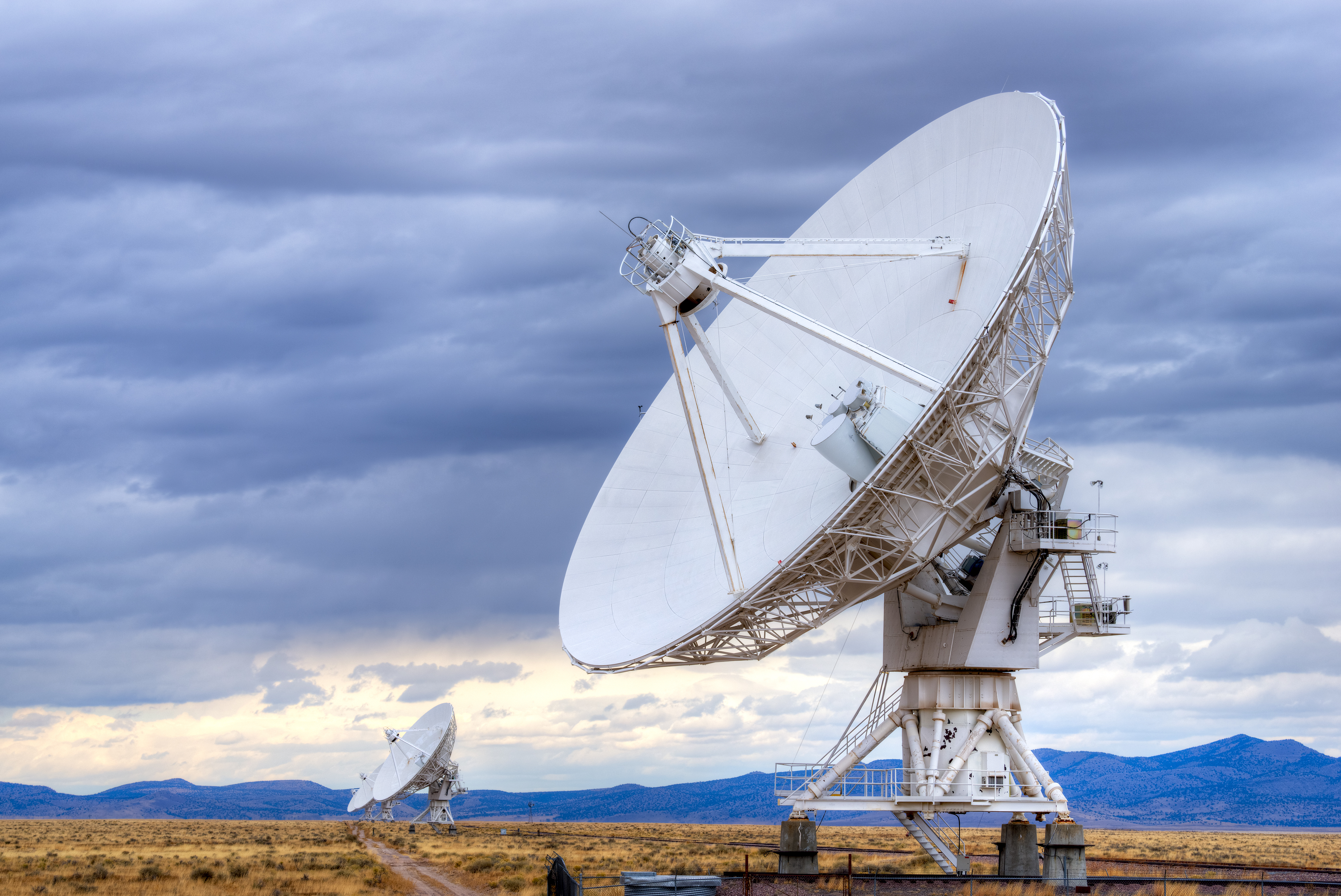National Radio Astronomy Observatory (NRAO) is an organization that operates radio telescopes for the United States. Scientists from the United States and other countries use these telescopes. The NRAO is financed by the U.S. National Science Foundation and has scientific offices in Charlottesville, Virginia.

The NRAO operates one of the world’s most powerful radio telescopes, the Karl G. Jansky Very Large Array, near Socorro, New Mexico. This instrument consists of 27 large, dish-shaped metal mirrors called reflectors that collect radio signals from space. Each reflector measures 82 feet (25 meters) in diameter. The reflectors operate as a single instrument. They move along railroad tracks built in the shape of a Y. Individual dishes can be moved as far as 22 miles (35 kilometers) from the center of the Y.
The NRAO operates the Atacama Large Millimeter/submillimeter Array (ALMA) along with observatory groups from other countries. ALMA is located in the Atacama Desert in Chile. ALMA consists of 66 moveable reflectors, similar to the VLA. Fifty-four reflectors measure 39 feet (12 meters) in diameter. The other 12 measure 23 feet (7 meters) in diameter. Large, wheeled transporter vehicles can pick up the reflectors and move them into different configurations.
The NRAO was founded in 1956 by the National Science Foundation. Associated Universities, Inc., a not-for-profit science management corporation, operates it. Scientists using NRAO telescopes have detected radio waves given off by nearly all types of objects in space. These objects range from nearby planets to distant quasars .
